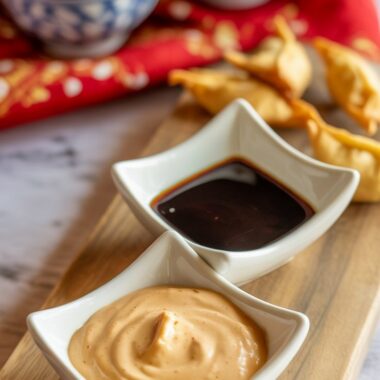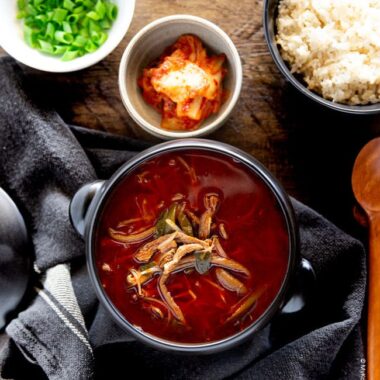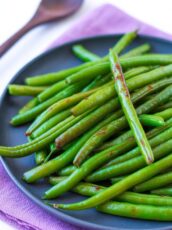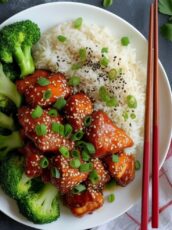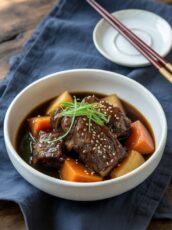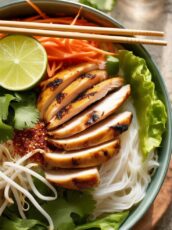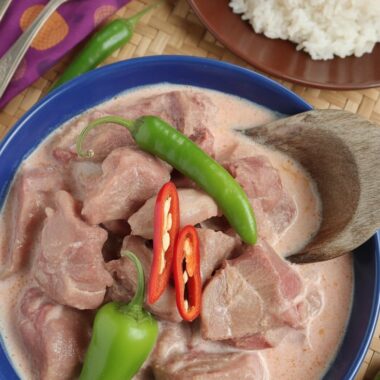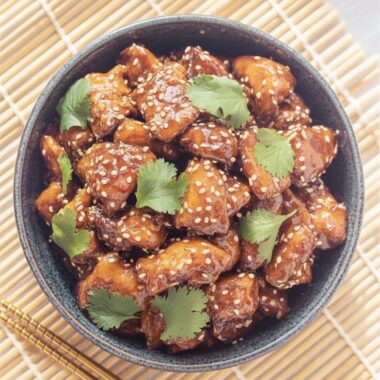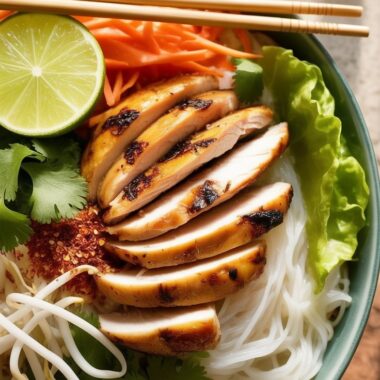Danmuji is one of those side dishes I can never imagine a Korean meal without. It’s that bright yellow, crunchy, sweet-and-tangy pickled radish that shows up next to spicy tteokbokki, a comforting bowl of ramyeon, or even wrapped snugly inside gimbap. Growing up, I used to sneak extra slices when no one was watching, because they had that perfect snap and sweetness that balanced out all the spicy food we loved.
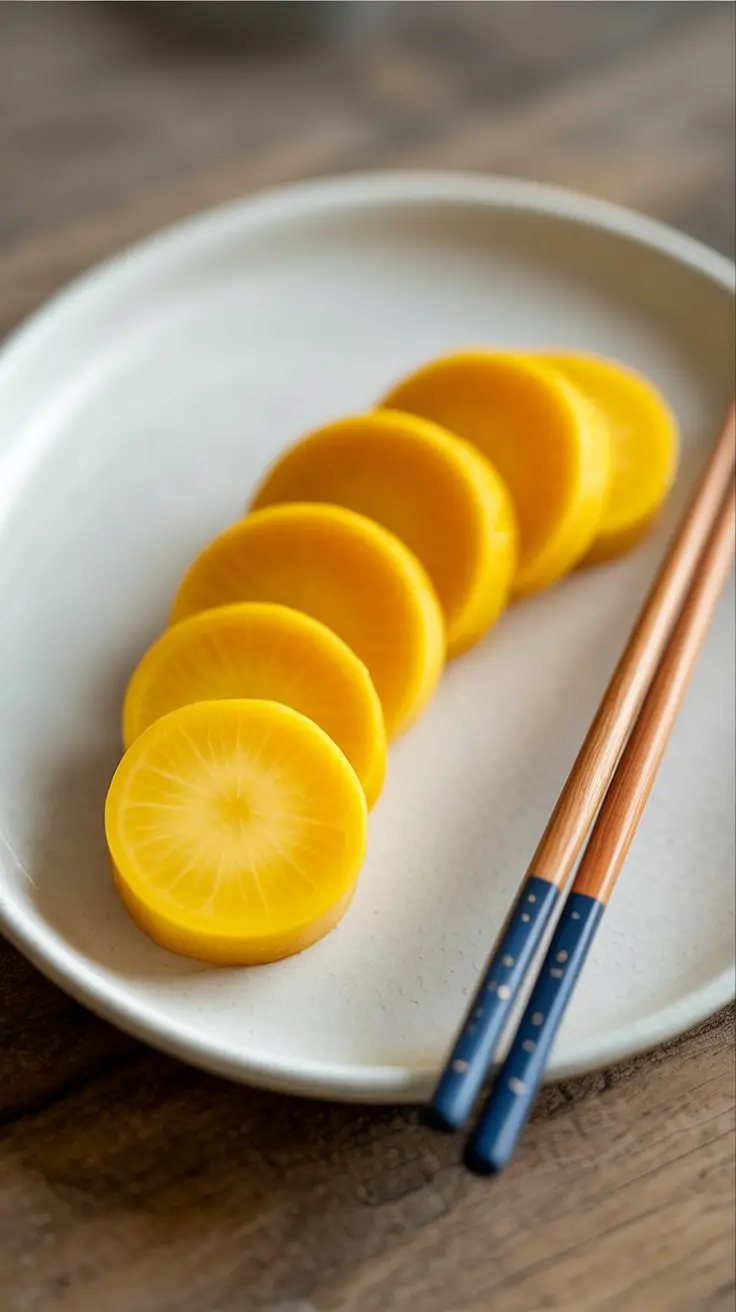 Traditionally, it came from Japanese takuan, but the Korean version developed its own personality over time—less salty, a little sweeter, and with a crunch that makes it addictive. Where takuan feels a bit chewy and wrinkly, Korean danmuji stays crisp and juicy. It’s one of those foods that quietly shows how cuisines borrow, adapt, and become something new.
Traditionally, it came from Japanese takuan, but the Korean version developed its own personality over time—less salty, a little sweeter, and with a crunch that makes it addictive. Where takuan feels a bit chewy and wrinkly, Korean danmuji stays crisp and juicy. It’s one of those foods that quietly shows how cuisines borrow, adapt, and become something new.
And here’s the funny part—it’s considered almost mandatory when eating Korean-Chinese dishes like jjajangmyeon or mandu. A Japanese-style pickle that Koreans can’t eat Chinese-style food without? Only food could weave that story.
Why I Like Making Danmuji at Home
When I was younger, the danmuji we bought at the store often came with labels I couldn’t ignore—saccharin, then later aspartame, plus bright food coloring. It always felt a little off to pair that with home-cooked meals. One day I decided, “Why not try making it myself?” and honestly, I never looked back.
The homemade version tastes fresher, the crunch is more satisfying, and you control exactly what goes in. Plus, there’s a quiet joy in seeing that pale white radish slowly transform into sunshine-yellow in your own fridge.
Ingredients I Use
Daikon or Korean Radish – Daikon is my go-to because it’s longer and easier to slice evenly, but Korean radish works beautifully too, just denser and juicier. A tip I learned the hard way: pick radishes that feel firm and heavy for their size. If it feels too light, it’s probably hollow inside.
Gardenia Fruit (Chija, 치자) – This is the traditional way to get that golden yellow color. It doesn’t add flavor, just the beautiful hue. If you can’t find it, turmeric works, but go light or it will add its earthy taste.
Sea Salt – Korean sea salt is less sharp than regular salt, but if you can’t find it, just reduce the amount slightly if using regular sea or pickling salt.
Sugar – I like using organic sugar, but plain white sugar works just fine.
Rice Vinegar – This gives a gentler tang compared to white vinegar, which can sometimes be a little harsh.
 How I Make It
How I Make It
Prepare the Jar – If I’m making a big batch to last for weeks, I wash and boil my glass jars. If it’s a small batch for quick eating, I just use a clean jar from the dishwasher.
Scrub or Peel the Radish – I like keeping as much skin as possible because it adds crunch, but if the radish has dark spots, I peel just those parts.
Slice It Up – For side dish use, I cut discs about ¼ inch thick. For gimbap, I slice long strips. Sometimes I even cut them into chunky batons if I want a rustic pickle to snack on.
Add the Chija – I tuck the gardenia fruit near the bottom of the jar so the color spreads evenly.
Make the Pickling Brine – Water, sugar, salt, and vinegar go into a pot. I simmer until the sugar and salt dissolve, then pour the hot liquid right over the radish.
Wait Patiently – This is the hardest step. After about a week in the fridge, the radish has soaked up the flavors and is ready. I usually swirl the jar once or twice during the week to keep the coloring even.
How I Like to Serve Danmuji
With Noodles – A bowl of jjajangmyeon or spicy ramyeon feels incomplete without it. That crunch between bites balances everything.
In Gimbap – The sweet tangy bite cuts through the richness of egg, beef, and sesame oil.
As a Quick Snack – Sometimes I’ll just grab a slice from the jar when I want something refreshing after a heavy meal.
With Fried Foods – It pairs surprisingly well with fried chicken, tempura, or even a Western fried fish sandwich.
 Storage Tips
Storage Tips
Homemade danmuji keeps in the fridge for several weeks, and sometimes even longer. The flavor deepens over time, and the crunch doesn’t fade quickly if you keep the jar sealed. I usually finish a batch in a month because I keep finding excuses to eat it.
If you want a lighter pickle, eat it after one week. If you want it more punchy and tangy, let it sit for two to three weeks before really digging in.
Korean Pickled Radish (Danmuji)
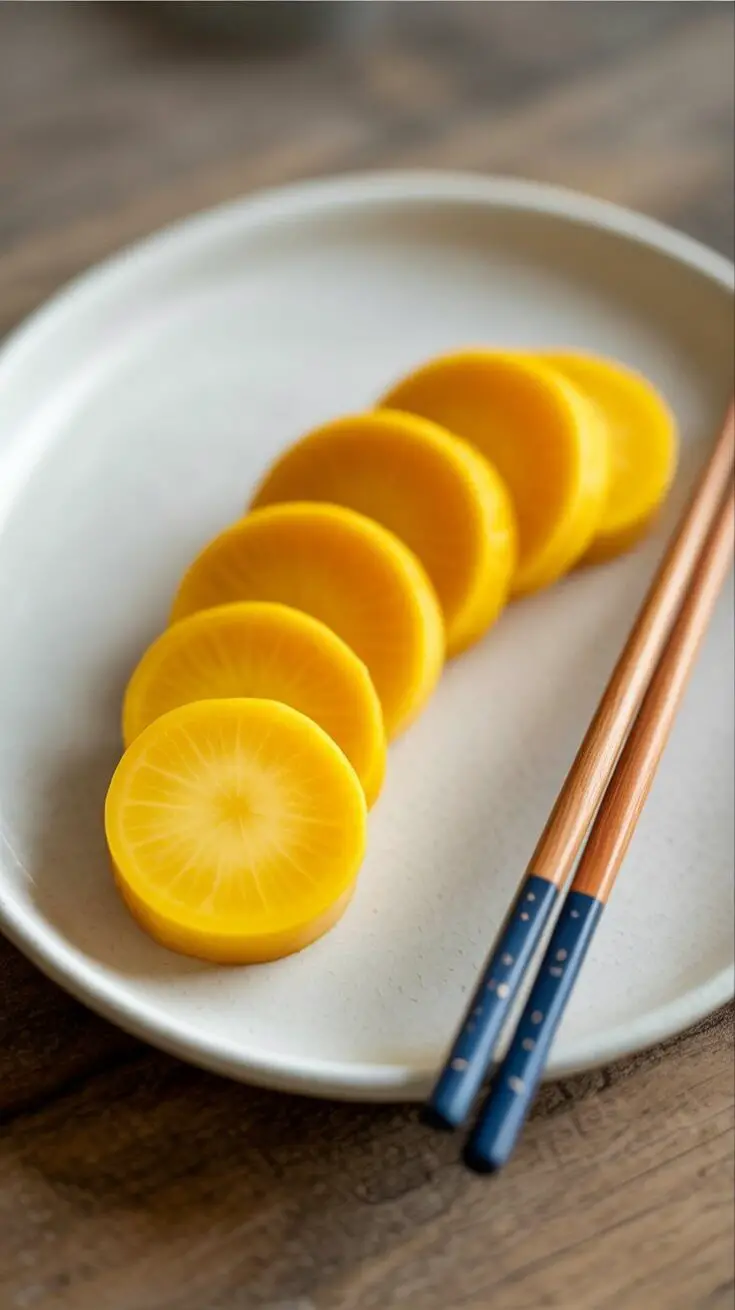
Crisp, tangy, and slightly sweet, danmuji is that bright yellow pickled radish you’ll often see alongside kimbap, ramen, or spicy rice cakes in Korean cuisine. It’s crunchy, refreshing, and balances out bold, spicy flavors beautifully. With just a few simple ingredients and a bit of patience, you can make this classic banchan (side dish) right at home.
Ingredients
- 1 lb Korean radish (mu) or daikon radish
- 250 ml water
- ½ cup sugar
- 1 tablespoon Korean sea salt
- ¼ cup rice vinegar
- 3 dried gardenia fruit pods (chija 치자) – for natural yellow coloring (optional)
Instructions
- Prepare a glass jar for pickling. Wash it thoroughly with soap and hot water. If storing long-term, you can also sterilize it by boiling, though for fridge storage, a dishwasher-cleaned jar works fine.
- Wash the radish well, scrubbing the skin with a vegetable brush. If the skin has blemishes or dark spots, peel it off.
- Slice the radish into ¼-inch rounds or cut into sticks/chunks small enough to fit inside your jar.
- In a small pot, combine water, sugar, salt, and vinegar. Simmer gently until the sugar and salt dissolve.
- Pack the radish pieces tightly into the clean jar. Pour the hot pickling liquid over the radish, then add the dried gardenia pods. Place them near the bottom of the jar so the yellow color distributes evenly.
- Seal the jar and let it sit at room temperature for a few hours, then refrigerate. Allow the radish to pickle for about a week, swirling the jar occasionally to ensure even coloring.
Notes
- If you don’t have gardenia pods, you’ll still get delicious pickled radish—just without the signature yellow color. A pinch of turmeric can be used as a substitute.
- For extra tang, add a splash of vinegar before serving.
- Danmuji pairs perfectly with kimbap, jjajangmyeon, tteokbokki, ramen, fried dumplings, or cold noodles.
Nutrition Information:
Yield: 1 Serving Size: 1Amount Per Serving: Calories: 538Total Fat: 1gSaturated Fat: 0gTrans Fat: 0gUnsaturated Fat: 1gCholesterol: 0mgSodium: 6469mgCarbohydrates: 129gFiber: 10gSugar: 116gProtein: 6g
Asianplated.com, occasionally offers nutritional information for recipes contained on this site. This information is provided as a courtesy and is an estimate only. This information comes from online calculators. Although allchickenrecipes.com attempts to provide accurate nutritional information, these figures are only estimates.
Final Thought
Danmuji may be humble, but it’s one of those foods that tie meals together. For me, it carries childhood memories of gimbap picnics, late-night jjajangmyeon takeout, and the comfort of a small yellow slice cutting through big flavors. Making it at home feels like carrying forward a little tradition, but with the peace of mind of knowing exactly what went into it.
Try other Korean recipes:

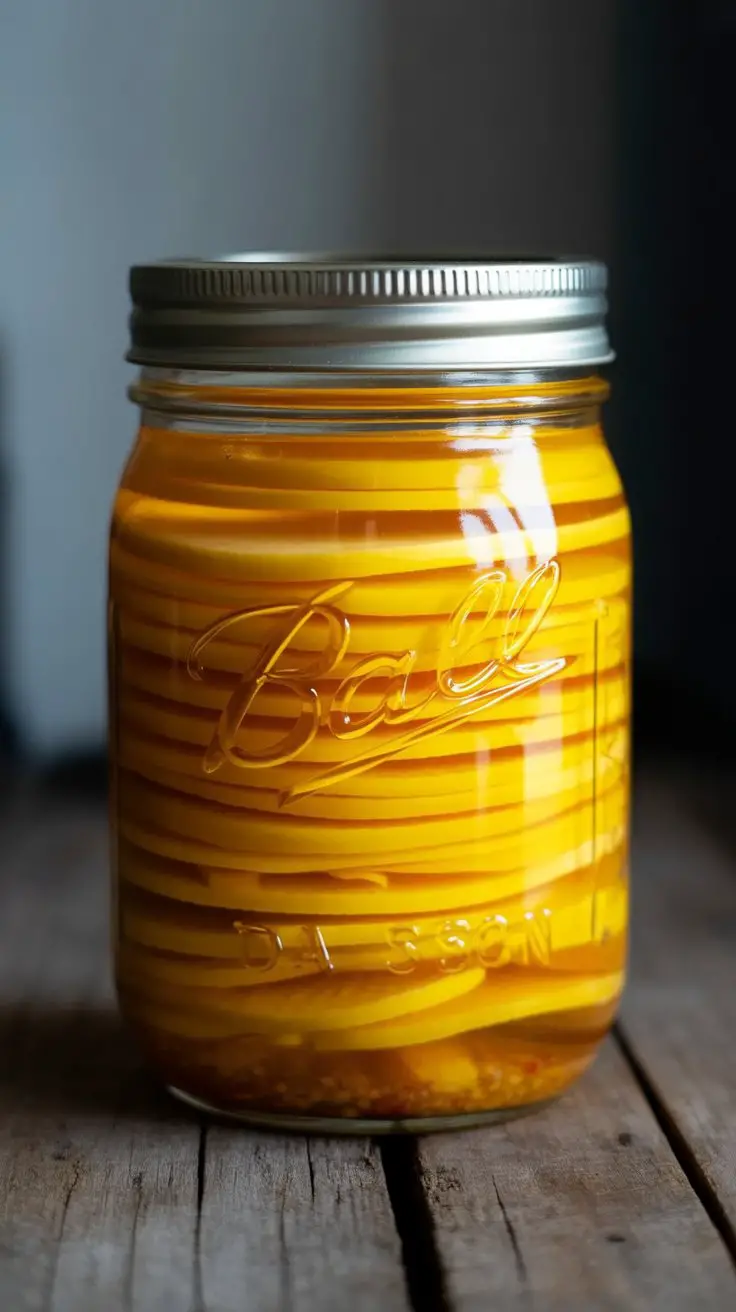 How I Make It
How I Make It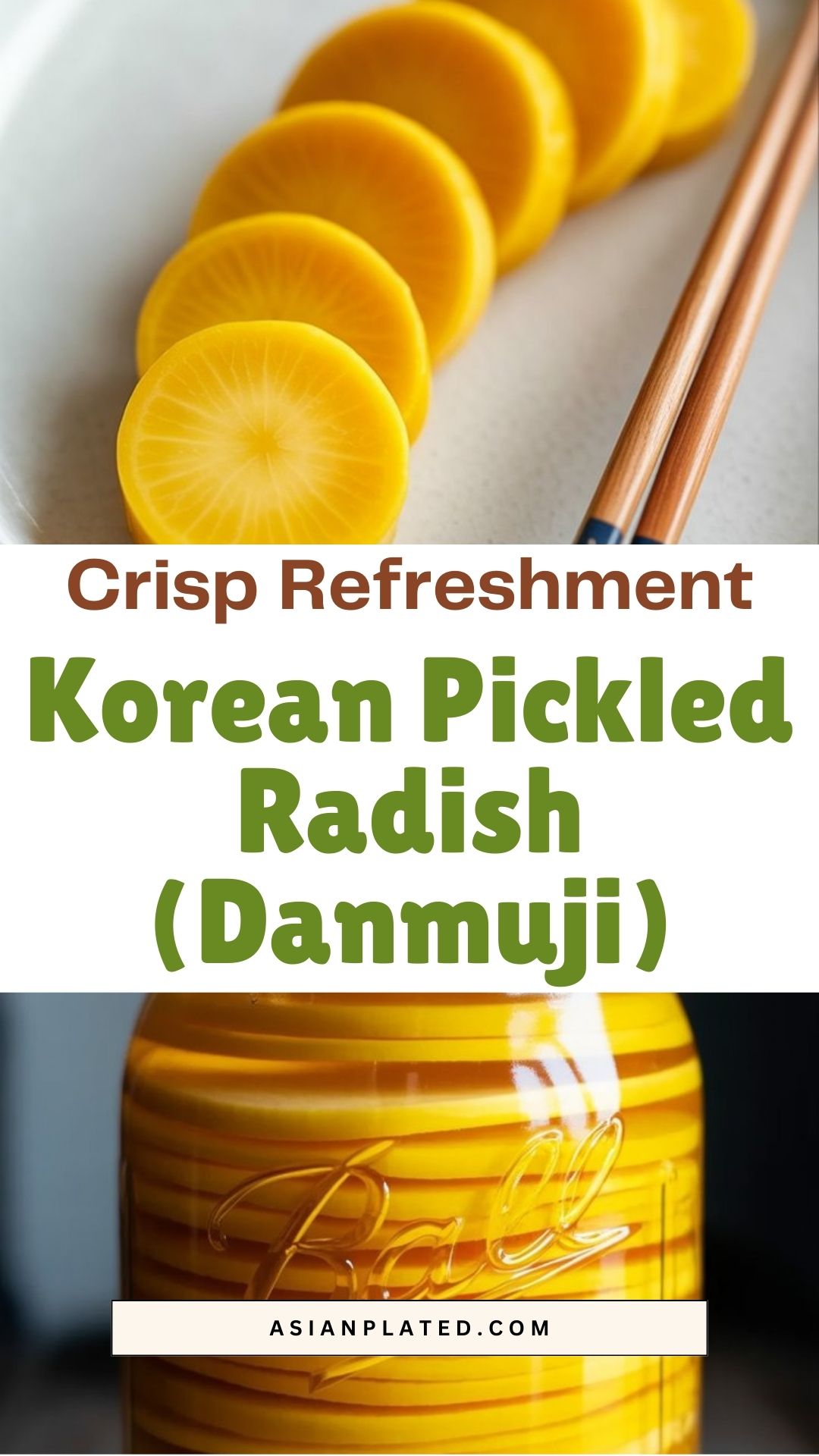 Storage Tips
Storage Tips